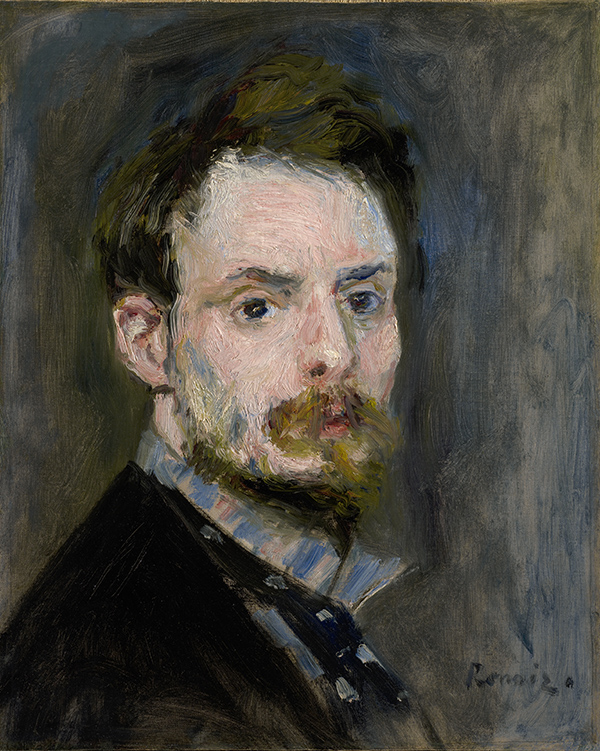
11 Sep TIO MASS: Surprises at The Clark
“Renoir: the Body, the Senses” at the Clark Museum in Williamstown, Mass, is opened through September 22. “Ida O’Keefe: Escaping Georgia’s Shadow” is up through October 14.

If you are in the camp that thinks Pierre-Auguste Renoir is the Sweet ‘N Low version of Peter Paul Rubens, sensuality on steroids, painterly treacle, then see this show and think again.
And if you thought Georgia was the only O’Keefe who could paint like a champ, again think again.
Both “Renoir: the Body, the Senses” and “Ida O’Keefe: Escaping Georgia’s Shadow” are worth a drive to the Berkshires and Tadao Ando’s stunning setting that is the Clark Museum, a minimalist environment with maximum impact.
Though it is true that with Renoir everything’s coming up opulent flesh and flashes of sun-drenched color, (often the two merging), Matisse once described Renoir’s paintings as “the loveliest nudes ever painted: no one has done better — no one.”
And he collected his work.
As did Pablo Picasso.
In fact, Renoir’s late work was known to have had a profound impact on both titans of modernism. Thanks at least in part to Renoir, both men felt comfortable deconstructing and distorting the human form and pushing the figure towards abstraction.
Pierre Bonnard also revered Renoir, as did Berthe Morisot, Claude Monet, Edgar Degas, and Paul Cézanne, arguably the father of modernism.
While Renoir himself admired the colorists supreme: Rubens, Boucher, and Delacroix, also Courbet who gave French artists permission to lift up the middle class, in addition to gods and goddesses and aristos, the usual suspects for subjects. On a trip to Italy in 1881-1882, Renoir also came to embrace Raphael, one of the three most highly regarded icons of the High Renaissance, another colorist supreme known to celebrate beauty supreme.
Renoir also boldly and unapologetically celebrated the “decorative” art of Boucher.
“Like Matisse, Renoir revered the grand French tradition of ‘decoration’ wherein actual bodies and convincing narratives are subordinated to the free play of fantasy and delight and to the pictorial effect of formal rhythms and seductive coloring. The French 18th century had seen this tradition reach its apogee. Renoir wanted to revive it.
“That is why François Boucher’s beautiful ‘Diana Leaving Her Bath”’ (1742) is such a key work in the show,” explained The Washington Post.
The following is a review of both shows by Roberta Smith of The New York Times:

Painting, Precisionist Ida O’Keefe.
Poor Pierre-Auguste Renoir. On the centennial of his death, his achievements are still something art historians, feminists, artists and critics argue about. His work has not settled quietly into the canon, especially not his nudes, and most especially not his late nudes. There is something invigorating about this state of affairs, which I don’t think can be claimed for any other leading Impressionist painter.
The show constitutes a vigorous back and forth: Its 70 works are predominantly paintings, sculptures and drawings that create a nudes-only review of the entire career of Renoir, the erstwhile Impressionist turned classicist turned modern mannerist. But they’re joined by nearly two dozen nudes by other artists from Rubens to Picasso, providing cross-talk of context and contrast.
Nearly everywhere you look in this show, the male gaze is looking back, ..
If you make a trip to The Clark before September 15, take the time to step into “Janet Cardiff: The Forty Part Motet.”
The sound installation envelopes the listener with a deconstructed recording of Thomas Tallis’ sixteenth-century choral work “Spem In alium (Hope in any other).”
Forty speakers are placed in an oval and for 11 minutes, each plays out the recording of an individual singer’s voice. In between those loops, there is also a few minutes of quiet, when listeners can hear the shuffling of people and the chatter of the singers as they get ready to perform again.
The effect is startling for its sudden silence punctuated by a thunderous rise.


Sorry, the comment form is closed at this time.